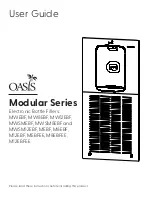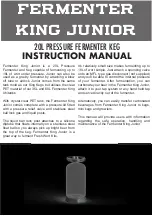
©
National Instruments Corporation
C-1
C
Common Questions
This appendix contains a list of commonly asked questions and their
answers relating to usage and special features of the AT E Series device.
General Information
What are the AT E Series devices?
The AT E Series devices are switchless and jumperless, enhanced MIO
devices that use the DAQ-STC for timing.
What is the DAQ-STC?
The DAQ-STC is the new system timing control ASIC (application-specific
integrated circuit) designed by NI and is the backbone of the AT E Series
devices. The DAQ-STC contains seven 24-bit counters and three 16-bit
counters. The counters are divided into three groups:
•
Analog input—two 24-bit, two 16-bit counters
•
Analog output—three 24-bit, one 16-bit counters
•
General-purpose counter/timer functions—two 24-bit counters
The groups can be configured independently with timing resolutions of
50 ns or 10 µs. With the DAQ-STC, you can interconnect a wide variety of
internal timing signals to other internal blocks. The interconnection scheme
is quite flexible and completely software configurable. New capabilities
such as buffered pulse generation, equivalent time sampling, and
seamlessly changing the sampling rate are possible.
How fast is each AT E Series device?
The last numeral in the name of an AT E Series device specifies the settling
time in microseconds for that particular device. For example, the
AT-MIO-16E-2 has a 2 µs settling time, which corresponds to a sampling
rate of 500 kS/s. These sampling rates are aggregate: one channel at
500 kS/s or two channels at 250 kS/s per channel illustrates the
















































